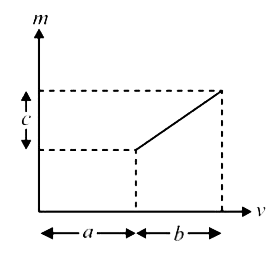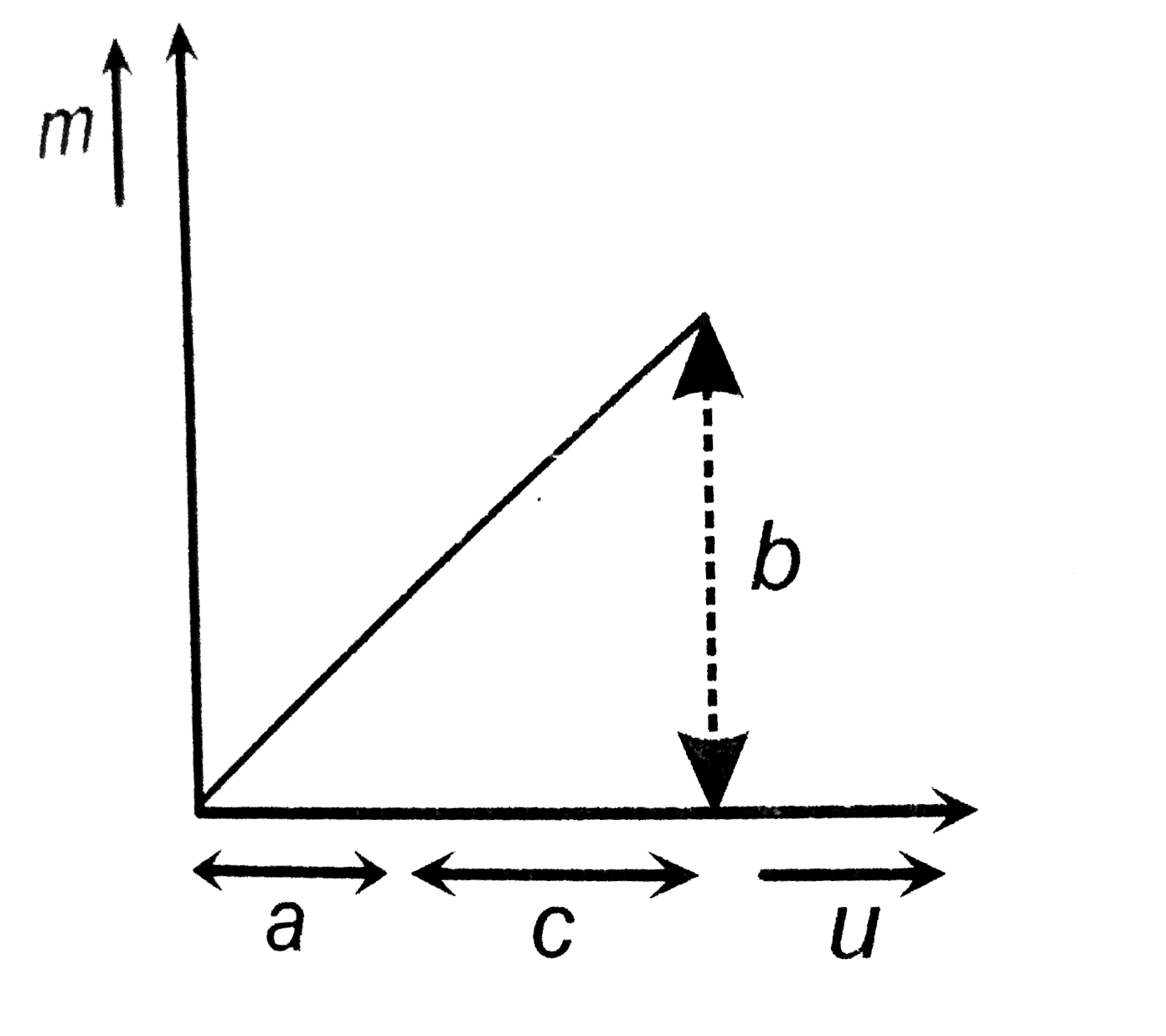
The graps shows the variation of magnification m produced by as convex lens with the image distance v. The focal length of the lens is
bc
cb
a
a,bc
The correct Answer is:D
For lens 1v−1u=1f⇒1v−1−u=1f
vv+vu=vf⇒vu=vf−1
m=vf−1⇒u=1fx−1
Comparing with y=Mx+C
Slope M=1f=bc⇒f=cb
Topper's Solved these Questions
- REFRACTION AT SPHERICAL SURFACESBOOK - CP SINGHCHAPTER - REFRACTION AT SPHERICAL SURFACESEXERCISE - EXERCISES
105 Videos
- REFLECTION OF LIGHTBOOK - CP SINGHCHAPTER - REFLECTION OF LIGHTEXERCISE - EXERCISES
67 Videos
- REFRACTION OF LIGHT BY PLANE SURFACESBOOK - CP SINGHCHAPTER - REFRACTION OF LIGHT BY PLANE SURFACESEXERCISE - Exercises
110 Videos
Similar Questions
The graph shows how the magnification m produced by a thin lens varies with image distance v. What is the focal length of the lens used?

View SolutionThe graph in shows the variation of image distance (v) with object distance (u) in case of a lens. Find focal length of the lens. What is the nature of the lens, if image formed is real ?
 .
.
View Solution
Knowledge Check
The graph shows how the magnification m produced by a convex thin lens varies with image distance v. What was the focal length of the used ?
 AbcBbcaCbcaDcb
AbcBbcaCbcaDcbThe graph in Fig. shows how the inverse of magnification 1/m produced by a convex thin lens varies with object distance u. What was the focal length of the lens used ?
 .AbcBbcaCbcaDcb
.AbcBbcaCbcaDcbFigure, shows variation of magnification m (produced by a thin convex lens) and distance v of image from pole of the lens. When of the following statements are correct?
 AFocal length of the lens is equal to intercept on v-axisBFocal length of the lens is equal to inverse of slope of the lineCMagnitude of intercept on m-axis is equal to unityDNone of the above
AFocal length of the lens is equal to intercept on v-axisBFocal length of the lens is equal to inverse of slope of the lineCMagnitude of intercept on m-axis is equal to unityDNone of the above
Draw ray diagram showing the image formation by a convex lens when an object is placed at twice the focal length of the lens.
View SolutionThe graph between the lateral magnification (m) produced by a lens and the distance of the image (v) is given by
View SolutionA convex lens of focal length f is placed somewhere, in between an object and a screen. The distance between the object and the screen is x. If the numerical value of the magnification produced by the lens is m, then the focal length of the lens is
View SolutionVariation of magnification(m) produced by a thin convex lens versus distance (v) of image from pole of the lens is shown in the graph. Which of the following statements is not correct ?

View SolutionA convex lens of focal length f is placed somewhere in between an object and a screen. The distance between the object and the screen is x. If the numerical value of the magnification produced by the lens is m, then the focal lnegth oof the lens is .
View Solution
